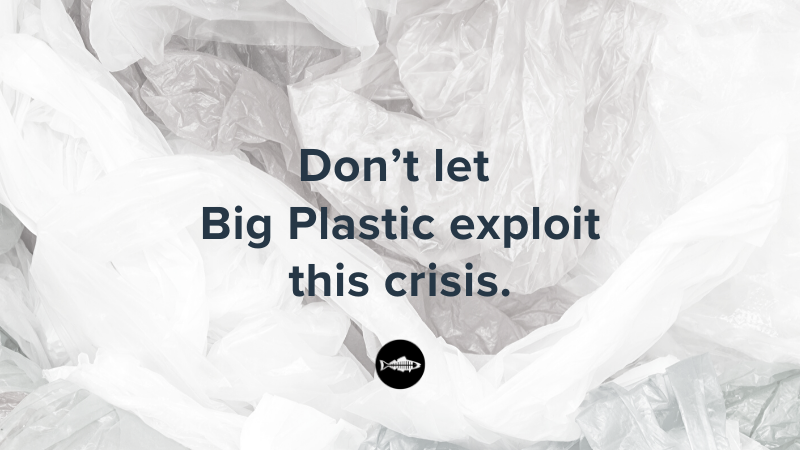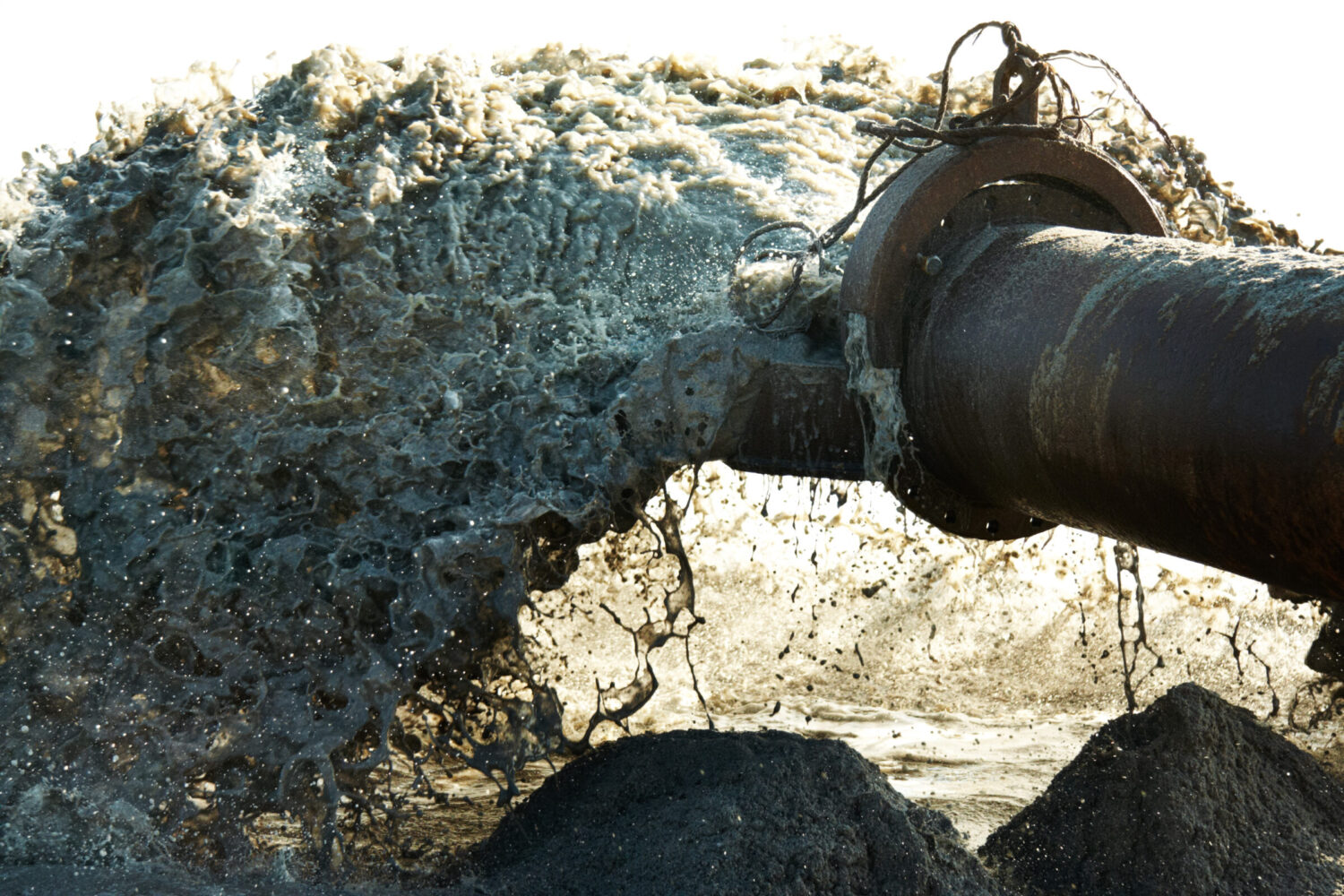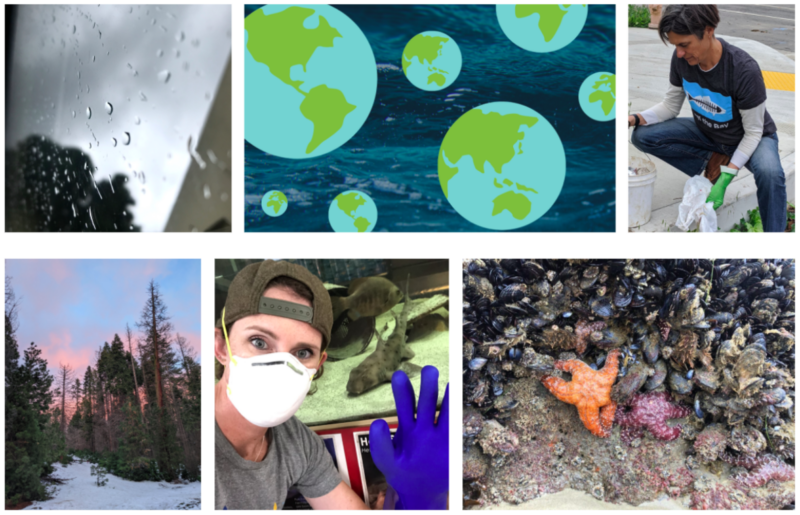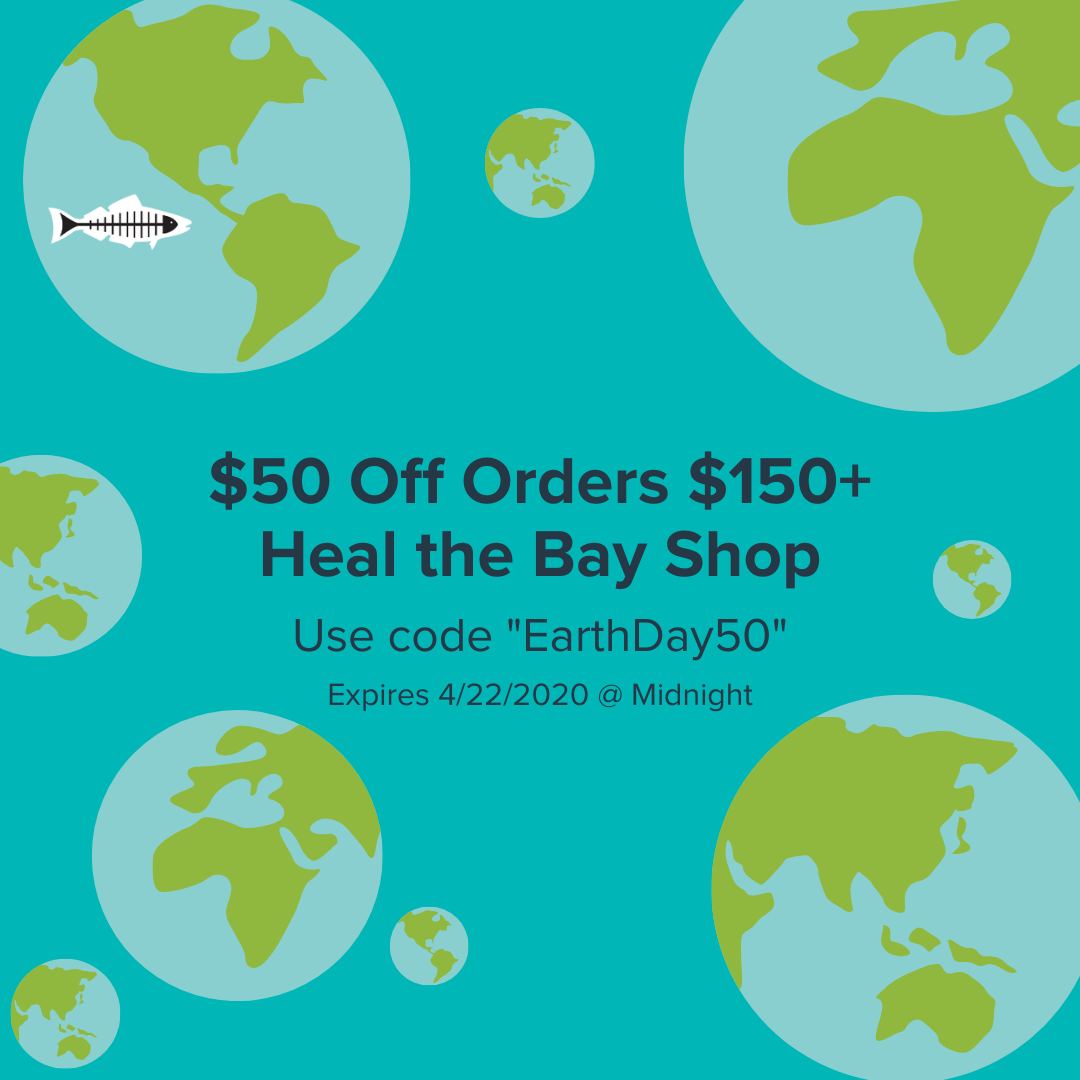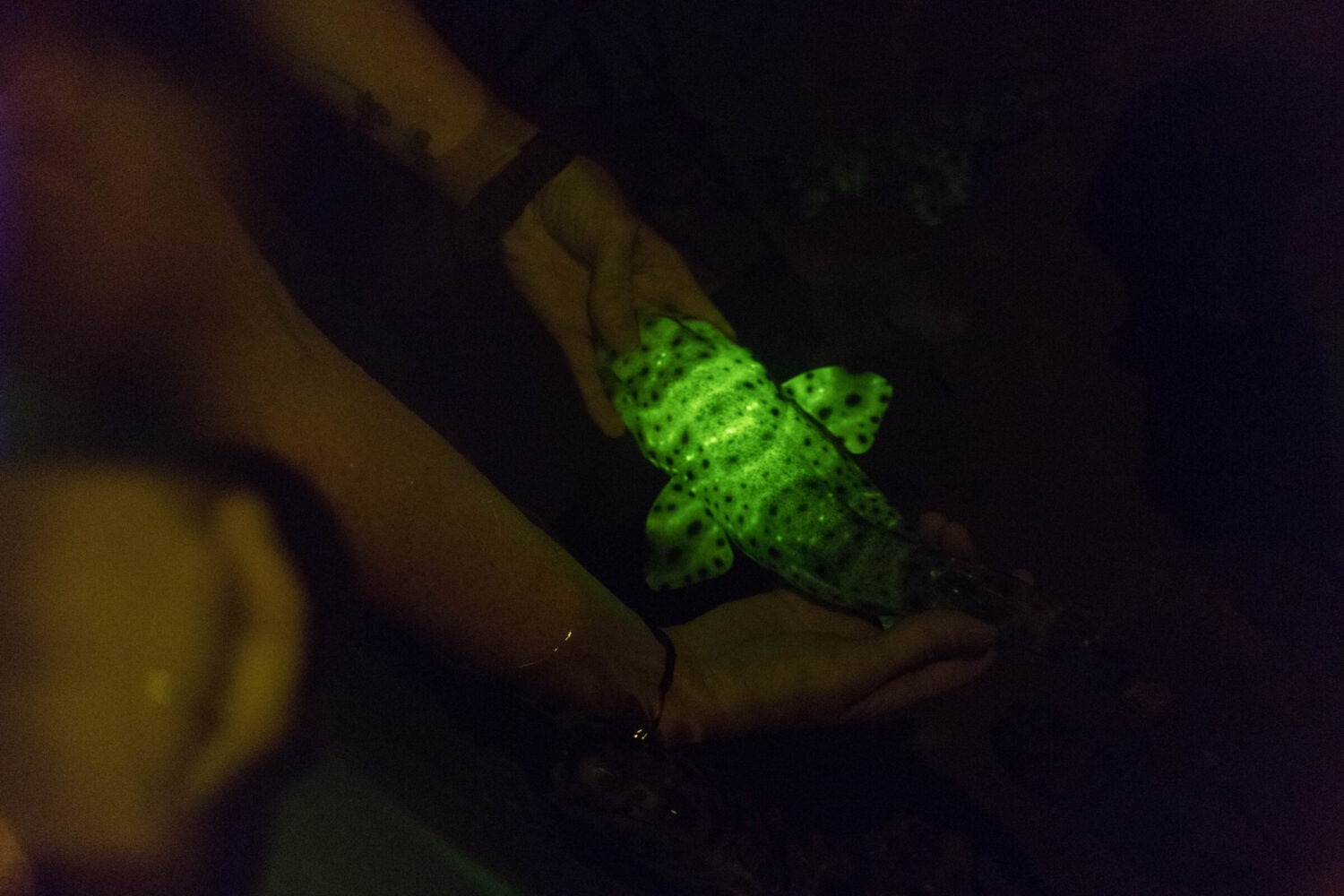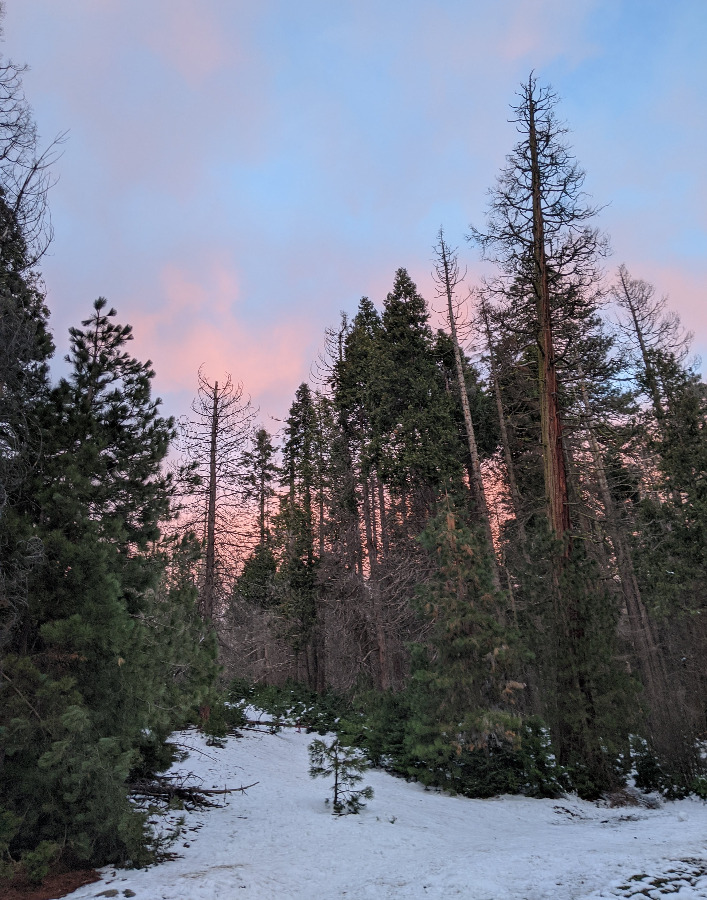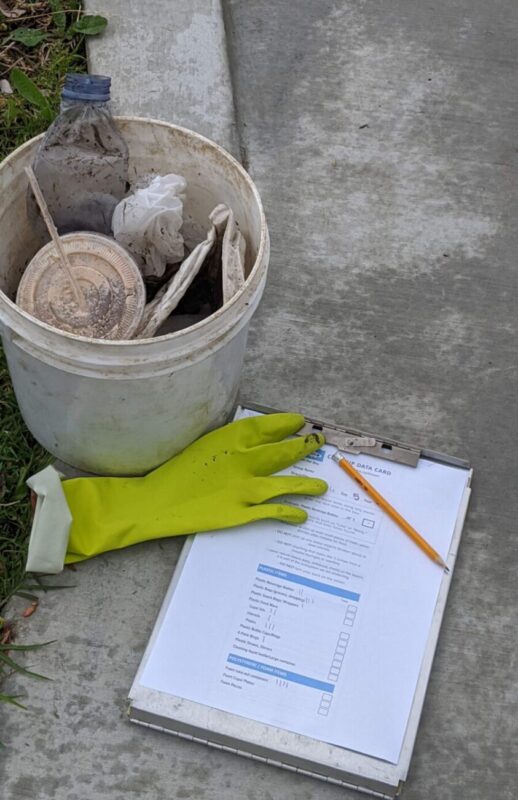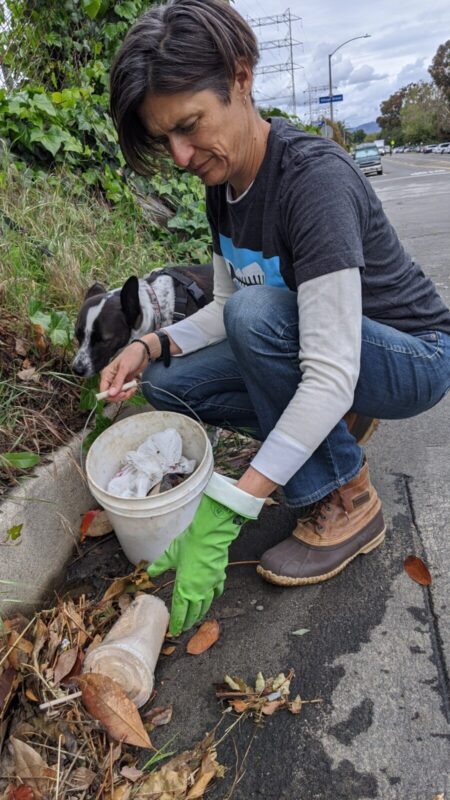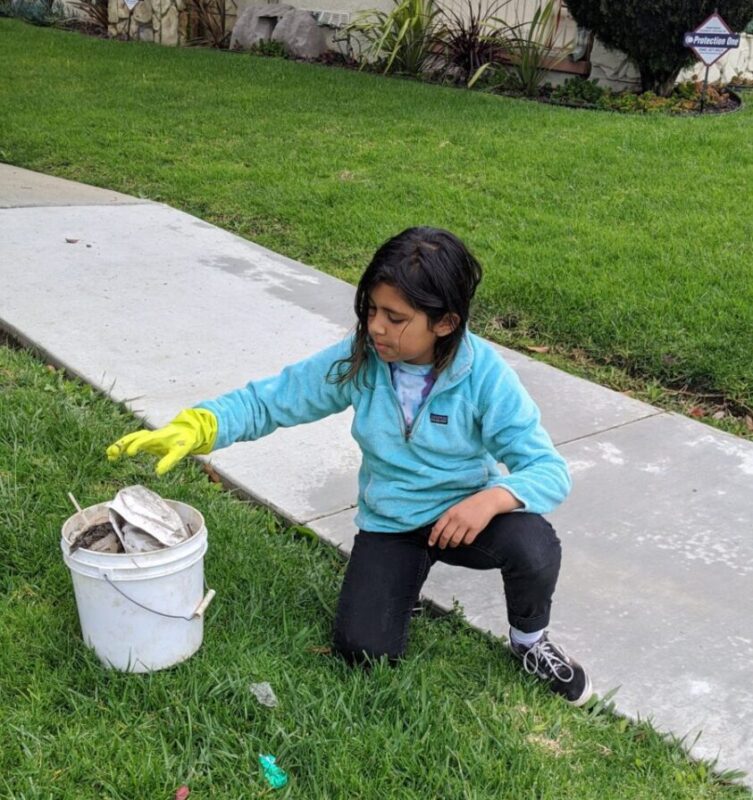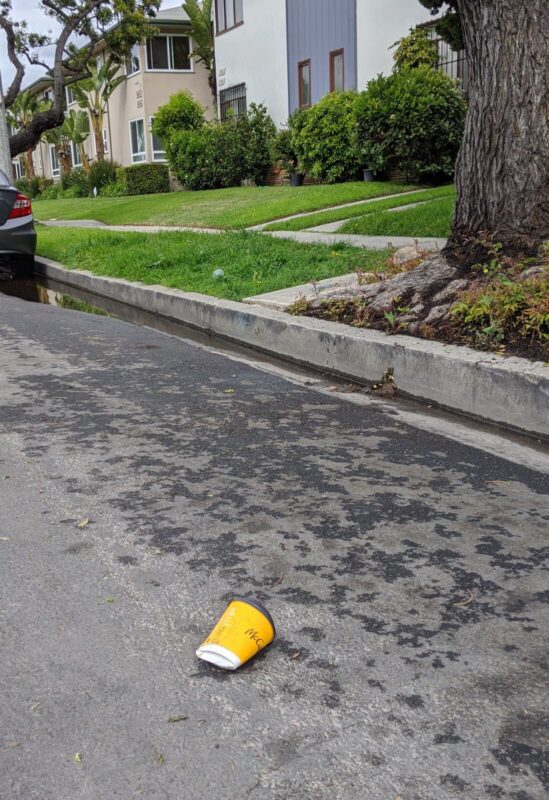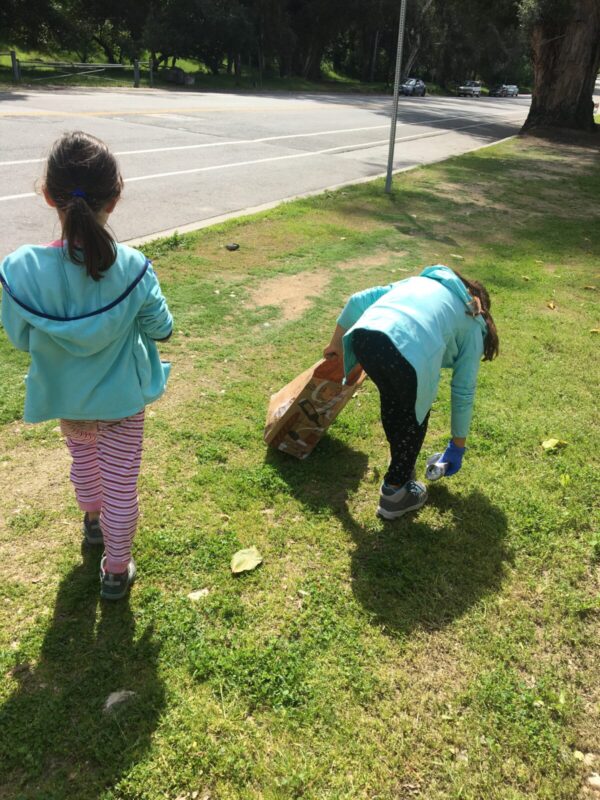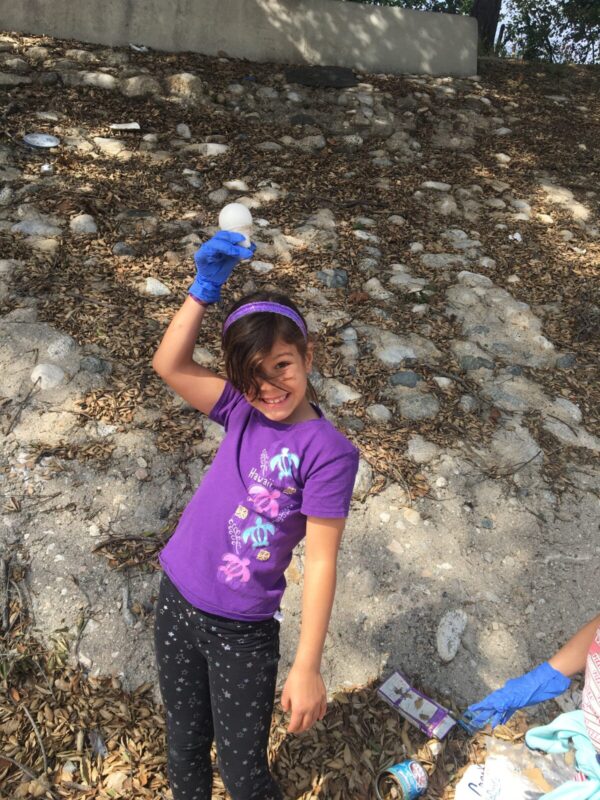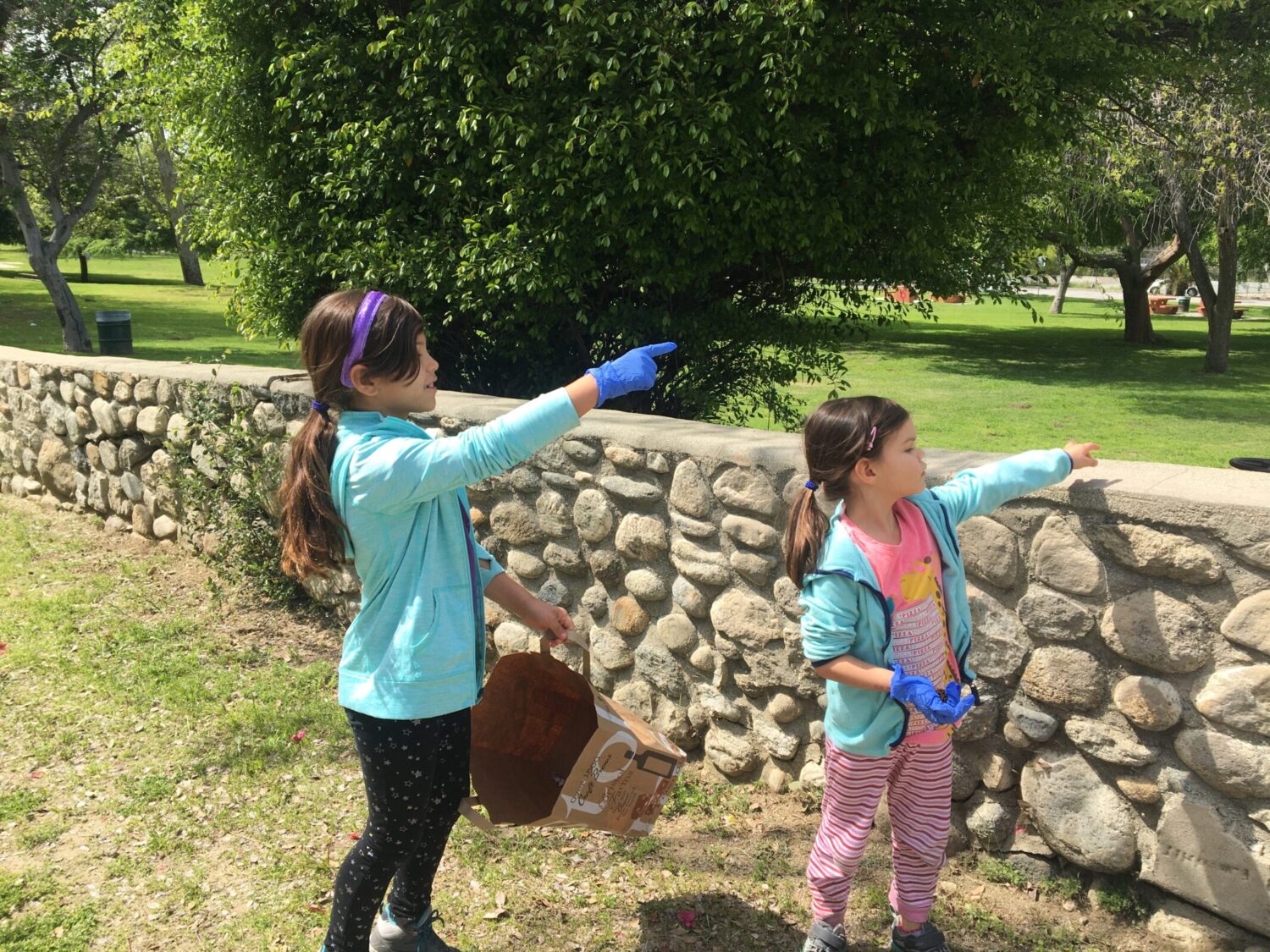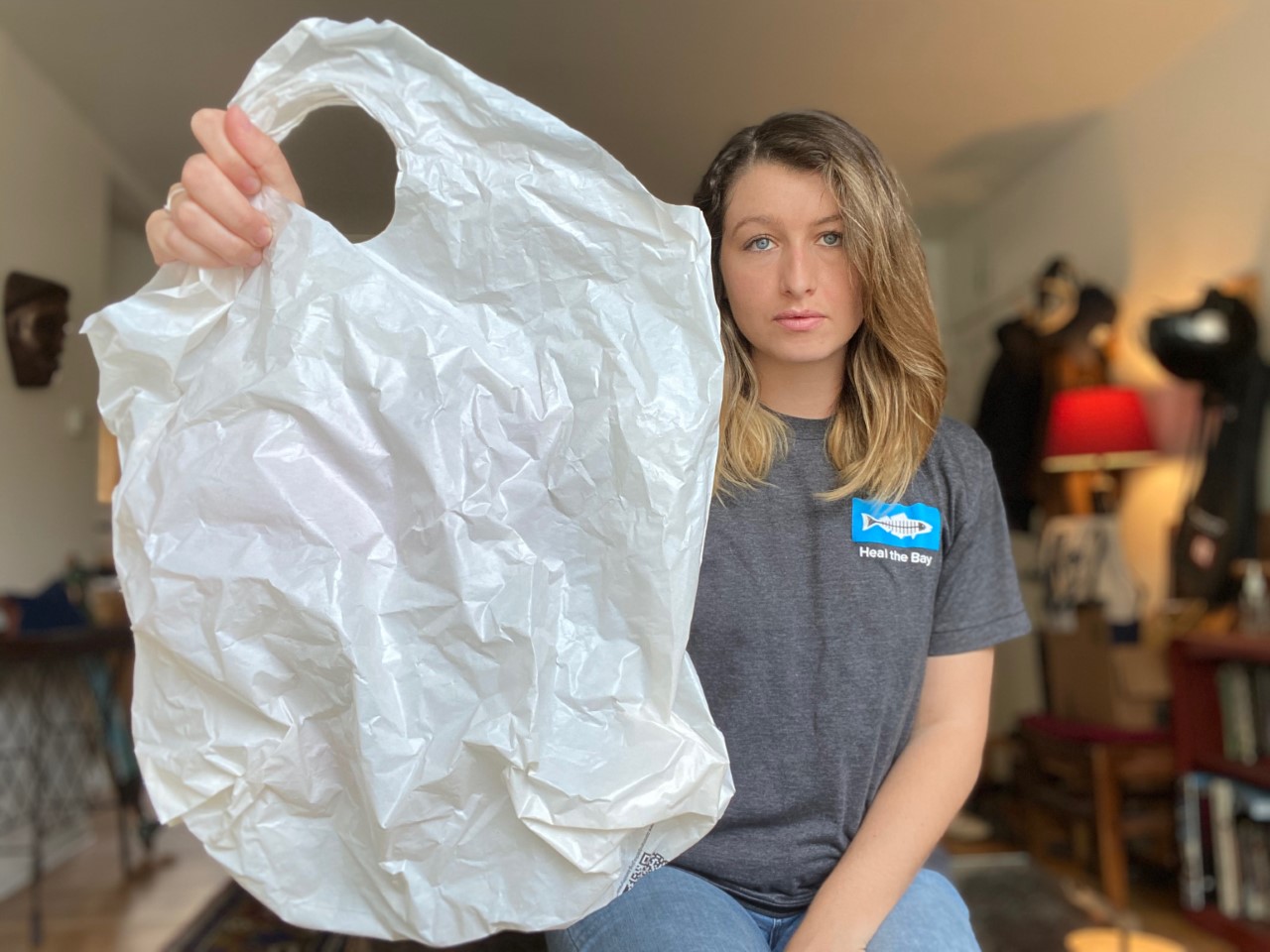
Emily Parker, Coastal and Marine Scientist at Heal the Bay dives into how to fight Big Plastic from your living room during the COVID-19 pandemic while staying safe, protecting your community, and supporting struggling local businesses.
Update: California Governor Gavin Newsom temporarily suspends the statewide plastic bag ban on April 23, 2020 in response to inaccurate claims from the oil and plastics industries that disposable plastics are safer than reusable items, an untruth that creates unnecessary panic. We are alarmed that some of our elected leaders are listening to the oil and plastics industries at a time when our resources should be supporting our strained health care system, protecting essential employees, and providing assistance to vulnerable communities. We encourage Californians to bring reusable bags if your local store allows it and opt to bag yourself! If the store is not allowing reusable bags, refuse the plastic bags at checkout, bring your items outside in the cart, and bag there with your reusable bags. Read our full statement.
It’s a Friday evening. Everyone across the city, the nation, the globe, is sheltering in place. Local businesses are suffering and I want to do the right thing and support them (plus, I’m hungry). So I order some noodles. They arrive at my doorstep, and they hit the spot, but the problem? They are packaged in a single-use plastic container. This is my dilemma, and I am not alone.
Plastic pollution advocates are all experiencing this same predicament: how do I stay safe, protect my community, and support struggling local businesses during the COVID-19 pandemic, all while still fighting Big Plastic (i.e. the plastics industry behemoth that includes plastic manufacturers, fossil fuel companies, and food conglomerates that all support the harmful production and disposal of single-use plastic products)?
Over the course of the past month, all of our lives in the US have changed drastically. Those who are fortunate enough to have a place to live are isolated in their homes, distanced from loved ones. More and more people fall ill every day, vulnerable communities are suffering disproportionately, and our governments and healthcare systems are pushed to the brink. Yet, all the while, Big Plastic does not sleep.
Behind the scenes, industry lobbyists from plastic corporations and fossil fuel companies are using the COVID-19 crisis as a front to push their agenda: make and sell more plastic. The result? Cities and states like San Francisco and New Hampshire have reversed their bans on plastic bags and the safety of reusable items has come into question causing delays for plastic bag bans in New York and Maine. All of this because an industrial conglomerate wants you to believe single-use plastic is less likely to make you sick (a claim with no un-biased evidence to back it up). So, what can we do about it?
Here are a few ways you can fight Big Plastic while sheltering in place:
1. Continue to support your local restaurants and prioritize those that choose sustainable alternatives for their take-out and delivery
Our friends at Surfrider Foundation have just the tool for you to keep ordering take-out and avoid the dirtiest plastics: Ocean Friendly Restaurants (OFR). This program works to stop plastic pollution at the source, and offers restaurants an easy way to show their commitment to making sustainable choices for our ocean. All OFR certified establishments make a commitment to reduce plastic waste through targets such as eliminating polystyrene (the worst plastic litter offender), only offering utensils and non-plastic straws on request, and not offering plastic bags. Use this handy map to find an Ocean Friendly Restaurant near you!
Don’t see your favorite spot? Call them up and politely ask if you can order your food with as little plastic packaging as possible. Keeping local businesses afloat during the COVID-19 pandemic while reducing plastic waste IS possible!
2. Take extra care to avoid single-use plastics when buying your essentials and support refill systems when possible
With bulk bins taped over and reusable bags being turned away, even a simple trip to the market for essentials can seem overwhelming if you are avoiding single-use plastic. However, a little extra preparation and research can go a long way.
Bring along reusable produce bags and pack up your own produce to avoid the plastic packaged stuff. Look for pantry items packed in cardboard, tin and aluminum to avoid disposable plastic bags. Already an avid refill customer? Check with your local refill store and see if they have curbside pick-up or delivery options for cleaning, household, and personal care products while we shelter in place.
Finally, go easy on yourself. Now is the time to show compassion and, if you buy more single-use plastic than you would like, don’t despair. We are all doing our best and limited options may force our hand. Do try to clean and repurpose any plastic you may get as best as you can; Pinterest and YouTube have great tutorials on how to reuse single-use plastic items.
3. Use your voice and your vote to stand up to Big Plastic
Stand with Heal the Bay and the Reusable LA Coalition as we take an active stance against Big Plastic’s fear mongering techniques to increase the production and sale of plastic during the COVID-19 pandemic. By supporting legislation such as the STOP Act of 2020, (a bill that would prohibit the Federal Administration from slashing royalty rates and giving away billions of dollars to fossil fuel companies) and continuing to push for local legislation that equitably reduces plastic use in Los Angeles County, Heal the Bay and our partners are working to ensure that Big Plastic and the fossil fuel industry do not benefit from a global crisis.
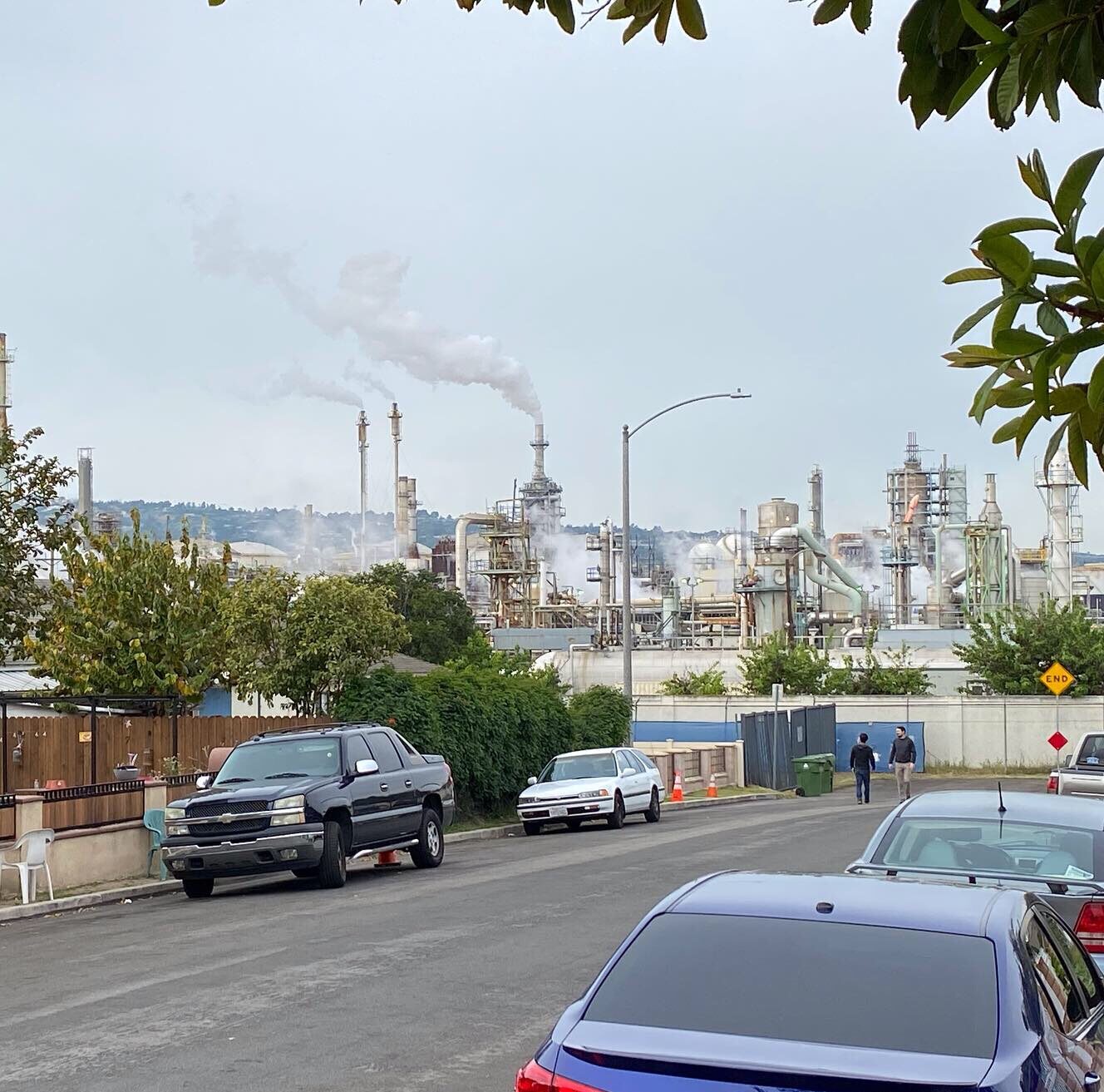

Every day, in the background of the growing pandemic, more fossil fuels are extracted and refined to produce disposable plastic products. This process directly impacts fenceline communities who live next to these operations and are exposed to higher levels of pollution; those same communities are also being disproportionately affected by the COVID-19 virus. Those plastics then must be disposed of and with a broken recycling system, and more and more recycling programs being affected by the COVID-19 pandemic, they are ending up in landfills and the environment.
Your voice MATTERS. Stand with us and tell Big Plastic they won’t get away with payoffs and rollbacks while our vulnerable communities continue to be impacted by plastic production. You can support these efforts by signing up as a Reusable LA supporter, making a financial contribution to Heal the Bay, or by signing our plastic petition. Follow Heal the Bay on social media or sign up for volunteer action alerts to stay in the know on our fight against Big Plastic and how you can take action from anywhere.
We want to hear from you. Use #fightplasticfromhome and let us know how you are continuing to fight Big Plastic and reduce your plastic consumption while sheltering in place. Together, we can reduce plastic pollution and keep our communities safe through this crisis and beyond.
